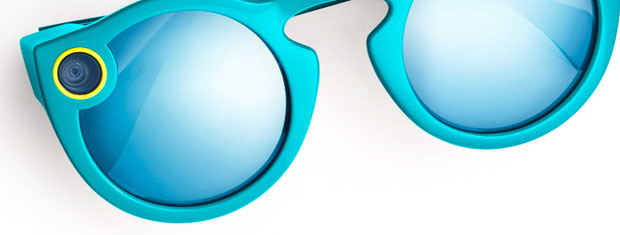As it approaches its first stock offering next month, Snap, maker of the popular mobile messaging app Snapchat, is positioning itself as a camera company.
“We feel like we’re really at the beginning of what cameras can do,” Snap CEO Evan Spiegel explained in a video promoting the company.
“Before, cameras were the best way to perfectly save or record something that you saw. They sort of helped augment memory — but now, you know, cameras augment the way that we talk,” he said.
“If you think about the keyboard and the way that sort of became the primary input for everything you do on your computer — everything starts with that flashing cursor — with Snapchat, the camera has become the primary input for the phone,” Spiegel explained.
Redefining the Camera
Casting a company whose chief product is a messaging app as a camera company has raised some eyebrows.
“It’s a provocative positioning,” observed Ross Rubin, the principal analyst at Reticle Research.
“Clearly, they’re not a camera company in the way that people traditionally think of them,” he told the E-Commerce Times. “Their competitors aren’t companies such as Nikon or Canon.”
To make a credible claim to be a camera company, Snap needs to redefine the camera as a chain of imaging components that include capture, processing and sharing, rather than a box that takes pictures.
“If you take the purpose that a camera has served and abstract that from the device, then that word applied to Snap becomes more defensible,” Rubin said.”Most investors, though aren’t thinking about that.”
Looking for Separation
Snap’s attempt to position itself as a camera company is not only a stretch, but also unnecessary, maintained Andreas Scherer, managing partner at Salto Partners.
“For now, Snap’s focus should be on growing the customer base and increasing its mobile ad sales numbers,” he told the E-Commerce Times.
There is a marketing angle to Snap trying to recast itself as a camera company. It’s a way for the company to distinguish itself from other photo-sharing and messaging apps, in particular Instagram and WhatsApp, both Facebook properties.
Instagram “has historically defined itself as a photo-sharing site,” Rubin said.
That kind of differentiation may be short sighted, though.
“It’s not going to be valid in the long term, because Snap isn’t a camera company,” said Bob O’Donnell, chief analyst at Technalysis Research.
Looking for the Next Facebook
Snap’s orientation to cameras isn’t entirely abstract, however. It introduced Snap Spectacles last year, a pair of sunglasses that record video from the wearer’s point of view for upload exclusively to Snapchat.
“The Snap Spectacles were interesting, but it’s not like they sold a lot,” O’Donnell told the E-Commerce Times. ” They just got a lot of buzz from a small group of people.”
The Snap IPO should fetch US$14 to $16 a share, which would value the company between $19.5 billion and $22.2 billion, according to market predictions.
“The company’s valuation was trimmed slightly, due in large part to competitors copying Snap’s features and services,” noted Charles King, principal analyst at Pund-IT.
“But if imitation is the sincerest form of flattery, the fact that high-profile companies like Facebook are following Snap’s lead suggests that the company is on the right track,” he told the E-Commerce Times.
“The continuing solid growth in Snap’s user base has many investors believing the company could be the next Facebook,” King said.
“From a business standpoint, that means that Snap can provide access to large, enthusiastic audience of young people — just the folks advertisers want to reach,” he pointed out. “That model has certainly brought Facebook enormous success and could very well do the same for Snap.”
























































Snapchat is way more popular on iOS than Android.